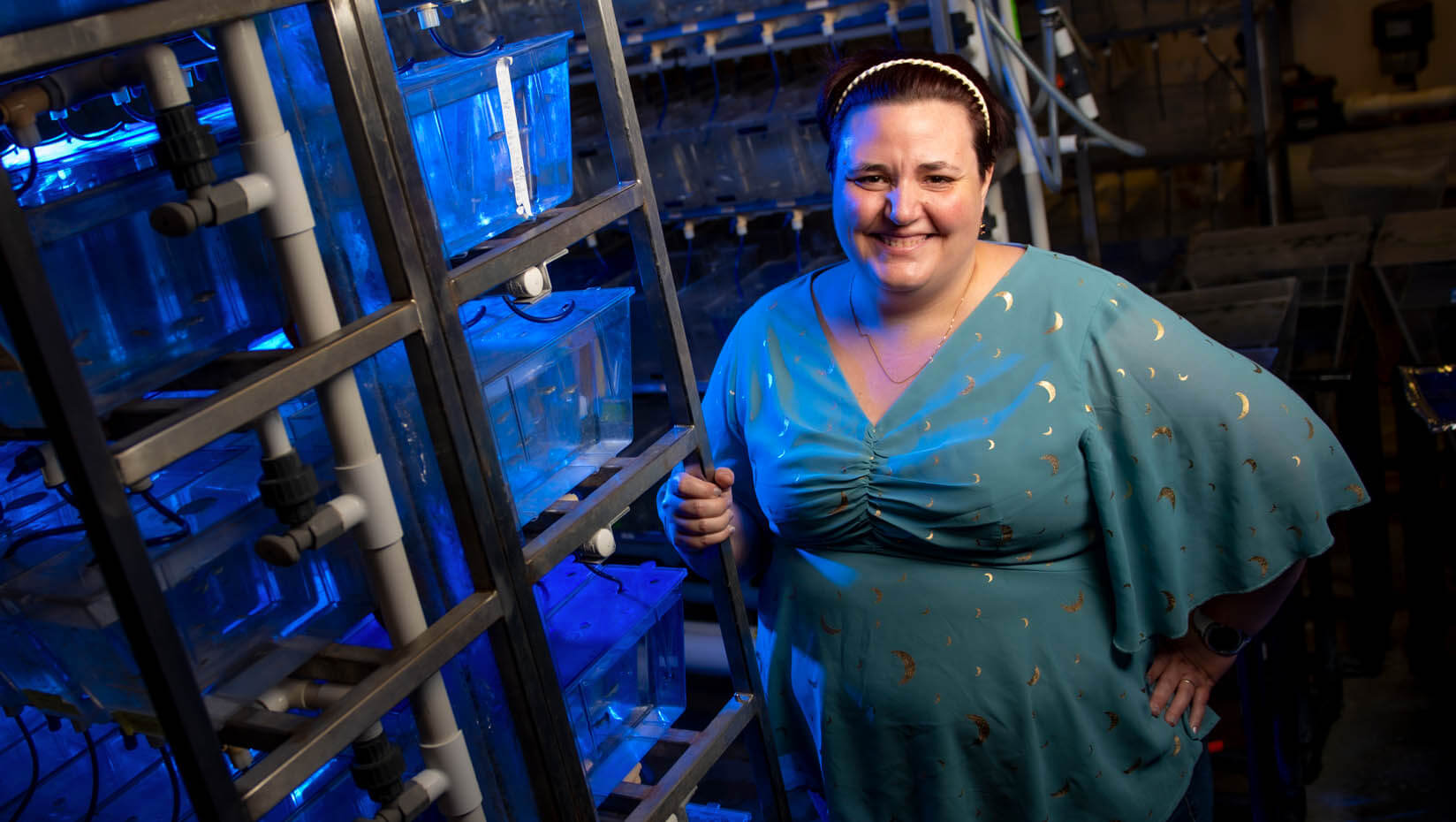
Brandy Soos: Mentorship and research go hand in hand
Brandy Soos came to the University of Maine with years of lab experience, but the Ph.D. student’s research on influenza A virus in Ben King’s lab may be her most cutting-edge project yet — and she’s training the next generation of scientists while she does it.
Soos says she “got bitten by the science bug” when she accidentally took a senior-level genetic engineering course as a sophomore at the Rochester Institute of Technology. By her senior year, she was presenting research on yeast prions, and was recruited to go to Japan to study the genetics underpinning retinitis pigmentosa, a disorder that causes blindness, using zebrafish as a model organism.
After her research experience abroad, Soos returned stateside and spent some time studying testicular germ cell tumors in Boston. Then, she moved on to a lab in New Mexico to research HIV — her first research experience looking at viruses and how they hijack the genes in the immune system in order to reproduce.
She was hooked. Soos wanted to keep studying viruses and thought that someday she might want to run her own lab, so she applied to Ph.D. programs throughout New England to be closer to family in her native Massachusetts. When UMaine researchers Carol Kim and Ben King reached out to directly admit her as a graduate research assistant — which meant that she wouldn’t have to do rotations as a teaching assistant and could focus on science — it was an offer she couldn’t refuse.
Plus, King’s lab used zebrafish, which, throughout her many years of research, had become Soos’ favorite model organism to study how viruses impact the innate immune system — that is, the body’s natural protection from outside invaders. Soos says that there is about 78% homology between human genes and zebrafish genes.
“If you’re looking to study the innate immune system, they’re probably the best model to use,” Soos says. “There are many genetic tools that can be used in the zebrafish to study the function of a gene or label a type of cell. They’re transparent for the first seven days of their life so it is possible to watch how different immune cells move through different tissues, which is amazing.”
Soos joined King’s lab in 2018. King and Soos made a great team: King’s focus on bioinformatics helped Soos learn to parse the enormous amount of data that comes with genetic research, and Soos’ extensive “wet lab” experience with genetic material meant that she could help manage the experimental side of the research.
“It’s the best of both worlds,” Soos laughs.
At the end of the first year of her Ph.D. program, Soos started investigating the impact of influenza A on the immune system. She first used her expertise in working with viruses to develop an improved protocol to infect zebrafish with influenza A. Both localized and systemic flu infections are studied in the zebrafish.
Through her research, Soos has been studying how influenza damages muscles in zebrafish. She is comparing the extent of damage in zebrafish that have been engineered to have different defects in their immune responses. Though Soos is still investigating how the damage is caused, her findings could have far reaching implications.
“It makes me wonder how the flu has impacted the genetics of human populations over time,” Soos says. “If we think of it from a historical standpoint, way back in 1918, it is estimated that 33% of the world’s population was infected with the flu during that pandemic. Outbreaks and pandemics of various pathogens over millions of years have provided the selective pressure needed to drive the evolution of our immune system so it can deal with these challenges.”
Ever the innovator, Soos is also working to apply fluorescently-labeled influenza with four color variations originally designed for mice to use in zebrafish. She has been able to visualize influenza infections and survey the damage in vivo using confocal microscopy.
With the markers, her zebrafish models bloomed with color.
“With a transparent model like zebrafish, being able to observe influenza was pretty cool,” Soos says. “We can see infections in real time.”
Along with her research, Soos mentors six undergraduate students in King’s lab. Not only does she help them navigate the lab, but she connects them with opportunities, assists them with applications, checks over their homework and teaches them how to present their data.
“Whether they go into graduate school or industry, learning how to present data is important and it’s something that’s not really taught,” Soos says.
Soos tries to cater lab work to an undergraduate’s interests to help them get the most out of their experience. For example, she’ll teach student researchers who express interest in being physicians how to run genetic assays like those used for medical diagnostics, while others that express interest in genetic engineering are paired with projects to generate new zebrafish models.
“In my eyes, my undergraduate students are all going to be junior scientists,” Soos says. “In our lab, we give undergraduates a project that becomes their own and they are responsible for it.”
Contact: Sam Schipani, samantha.schipani@maine.edu
